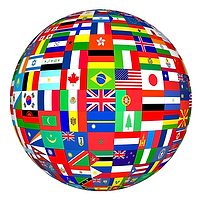Food recalls cost an average of $15 million per incident and cause significant harm to brands’ reputation and credibility. They can also cause significant harm to individuals. In the U.S. alone, foodborne illnesses make 48 million people sick and are responsible for 3,000 fatalities every year.[1] Investment in best practices, effective consumer education, and responsible regulation continue to be vital to combating these costly outbreaks.
We’re also entering an era in the history of food safety when new technologies hold more promise and transformative potential than ever before. Technology is poised to help the food industry finally realize the long-term goal of nearly eradicating foodborne illness.
While we’re seeing advancements in many exciting places, three technologies in particular—Blockchain, the industrial internet of things (IoT), and next-generation sequencing (NGS)—will radically help the industry strengthen their food safety programs, deter food fraud, and improve tracebacks and recalls.
Blockchain: Food Safety as a Cooperative Effort
The number of companies and governments announcing tests or deployments of blockchain technologies dramatically surged over the course of 2016. It’s a market that is expected to reach $7.74 billion by 2024.[2]
The compelling use-case for blockchain technology is that it gives organizations the ability to record and secure arbitrary and disparate kinds of data. There are obvious use-cases for medical records, transaction processing, identifying management and banking. Food safety, too, is poised to benefit from this new method of data management.
In late October, Walmart began testing a blockchain co-developed by IBM. The goal? To create a far more efficient and effective way to monitor its food supply chain and mobilize quickly when something goes wrong.
But IBM and Walmart aren’t the only ones trying to take advantage of this new technology. We’re already starting to see several start-ups enter the space, including Provenance and ripe.io, both companies empowering brands to be more transparent and connected across the supply chain.
If we look at traceability done well in the food industry, we see examples where it is possible to identify—down to a specific time and location—where the problem happened and isolate the products that need to be recalled.
Blockchain will exponentially amplify this traceability. The ability to securely share and track data across organizations, across continents, from farm to processing plant to grocery store shelves, means the food safety industry will gain unprecedented insight into exactly what’s going on in our supply chains.
Industrial IoT: Data from Farm to Table
The rise of the industrial internet of things has helped prompt widespread innovation in sensor technologies that accurately and consistently capture and communicate data. Advances in networking, storage, and processing have created a mass market for sensors delivering real-time data from across the food supply chain.
We’re starting to see commercially viable sensors that not only advance computer vision but also enable machines to hear, feel, taste, and even smell. These new categories of sensors now allow us to tap into whole new layers of data.
In agriculture, sophisticated sensors are becoming an increasingly key component of precision agriculture or site-specific crop management. A recently founded startup, Raptor Maps, creates harvest monitors that make sense of drone imaging and thermal sensor data to empower farmers to make better decisions about the fertilizers and other inputs they apply to their fields.
Aromyx is using synthetic DNA and advanced robotics to build sensor systems and a platform for the digital capture, indexing, and search of scent and taste data. The company’s EssenceChip™ is a taste and scent sensor in the form of a disposable biochip consisting of human olfactory and taste receptors. The sensor actually outputs the same biochemical signals that the human nose or tongue sends to the brain when smelling or tasting a food or beverage.
Aromyx is also building an online database of taste and scent data that can be leveraged to train new machine-learning models and generate new insights relevant to food manufacturers.
There’s every reason to believe that the net-new data gathered by innovative sensors will be leveraged to build safer food manufacturing plants that will operate more efficiently, monitor for unintended contamination, and protect against food fraud. Each one of these potentialities would strengthen food safety programs and help brands identify problems more accurately and earlier.
NGS: Proactive Food Safety
NGS is another technology poised to have a major impact on food safety. The costs and turnaround times of NGS have decreased to the point where this technology is fast becoming commercially viable. As the food industry continues to adopt NGS, we’ll continue to see dramatic improvements in food safety testing.
NGS is something of a catchall term describing the most modern, parallel, high-throughput DNA sequencing available. NGS has greatly reduced the time and cost of DNA and RNA sequencing, revolutionizing both the study and application of genomics and molecular biology.
It can sequence hundreds of samples at a time and generates up to 25 million reads per a single experiment. This level of information makes it possible to identify pathogens at the strain level even in mixed-ingredient and packaged foods.
NGS-based food tests and software analytics have potential to significantly improve the scalability and accessibility of food safety and quality measures.
A study conducted by the American Proficiency Institute that analyzed the results from 39,500 food proficiency tests conducted between 1999 and 2012 found that routine pathogen testing with NGS detected 100 percent of target genomes, while PCR or antigen/antibody based methods detected 98 percent to 99 percent of target genomes. At scales of hundreds of thousands of tests per year, the reduction in number of false-negative rates, each a potential recall, is substantial. Furthermore, conversations with global food testing labs confirm false positives can range anywhere from 5 percent to 50 percent of the time. While not a food safety concern, false positives are a nuisance and can result in operational and inventory holding costs, as well as short-supply penalties.
NGS is now poised to replace PCR and antigen-based methods as the standard in food safety testing. PCR-based tests have higher limits of detection and cannot be used to distinguish between closely related species. NGS-based tests, on the other hand, have very low limits of detection; the increased sensitivity of NGS produces more accurate results along with much higher levels of specificity and resolution in a single unified test. This results in more actionable information, faster and at lower costs.
The result of NGS adoption will be bulletproof food safety testing programs that provide unprecedented insight into supply chains at a rate and scale never experienced before.
Conclusion
The food industry is home to farmers, manufacturers, commodity brokers, distributors, retailers, consumers, geneticists and entrepreneurs, among others. In most cases, moving food from farm to table is an incredible feat of horizontal integration.
We’ve never had as much data as we do now, but for the most part, our data remain siloed and underutilized.
To have a chance at eradicating foodborne illness, the food industry needs to not only leverage today’s data collection technologies, testing capabilities and analytics but also coordinate our efforts to build a comprehensive view of food safety across the global food industry.
The technologies outlined here will enhance food safety in vastly different ways. What they have in common is their power to bring unprecedented levels of transparency and insight. On the foundation of increased transparency, we will build a safer food future. These technologies give hope that we’re already moving in the right direction.
Mahni Ghorashi is the co-founder and CCO of Clear Labs, where he leads product, sales and marketing.
References
1. https://www.cdc.gov/foodborneburden/.
2. http://www.grandviewresearch.com/press-release/global-blockchain-technology-market . >




